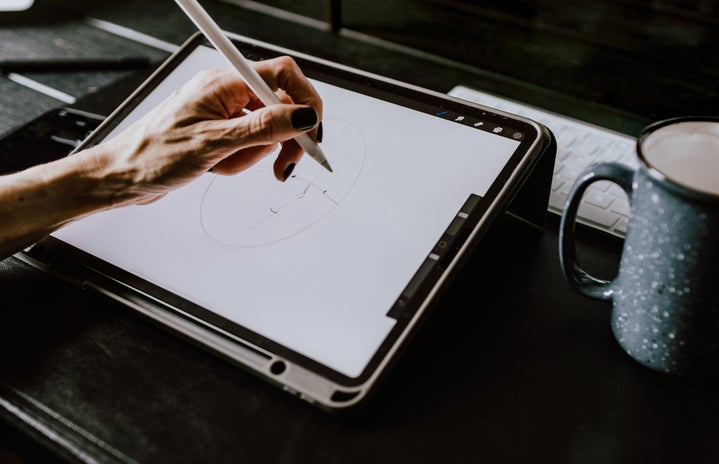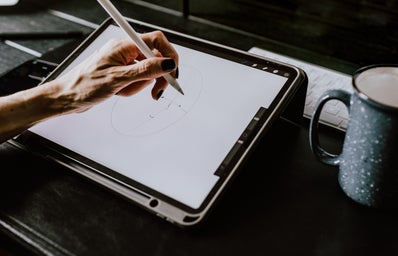AN ANALYSIS OF THE WARNER BROS. DISCOVERY MERGER AND recent developments in ai art technology
During the pandemic, animation was one of the few sectors of the entertainment industry that produced and released shows despite the lockdowns. However, now that the nation has opened up again, streaming platforms such as HBO Max and Netflix, are eagerly willing to discard their animation projects.
Simultaneously, in the past several years, AI art technology has improved tremendously and is now accessible to the public. As AI-generated art is nominated and honored with awards, working artists are concerned about their livelihoods.
Between the merger of Warner Media and Discovery, and the release of AI art technology to the public, recent months have revealed the precarious nature of art under capitalism. While art is distributed through commercial systems, these enterprises just as easily stifle creativity.
Warner Bros. Discovery Merger
On April 8, 2022, AT&T spun off Warner Media, LLC, and merged it with Discovery Inc. When David Zaslav, the CEO of Discovery, became the CEO of Warner Brothers Discovery Inc, he canceled 38 animated shows, fired 82 workers from scripted, unscripted, and animation divisions, and left 43 vacant positions unfilled in order to eliminate the $50 billion debt that Warner Brothers accrued after being acquired by AT&T (HRD).
The canceled shows include fully completed programs, such as Little Ellen which has 20 completed episodes that will not air, and Mao Mao, whose fully completed the second season was canceled. Some new original programs will not air at all.
The LA Times reported that at an investor call in November, Zaslav claimed, “We did not get rid of any show that was helping us.”
However, projects from popular franchises were included among the cancellations. Warner Bros. Discovery canceled Infinity Train, Scooby-Doo: Holiday Haunt, The Amazing World of Gumball: The Movie, and Batman: Caped Crusader.
Owen Davis, the creator of Infinity Train, wrote on his substack, “We’re working at the intersection of art and commerce, but the people in charge have clearly forgotten that they’ll have no commerce without the art.”
He explained, “Discovery has failed to show statistics or provide what metrics they’re using. By all publicly available metrics, Infinity Train, was in the 90th percentile in children’s media, at its height was 17x more popular than the average TV show, as of yesterday evening was #1, #2, #3, and #5 on iTunes for kids and family, and in the top 20 on iTunes overall.”
Rather than animation not being viable, it seems that Warner Bros Discovery simply does not value it. Warner Bros. Discovery also closed Stage 13, its digital short-form programming division, and has merged Cartoon Network’s animation division with Warner Bros. Animation. Even though this restructuring does not mean the end of either division, it does mean that fewer resources will be allocated to them.
Warner Bros. Discovery’s approach to animation reflects the disregard that the entertainment industry as a whole has for it. According to the Wrap, in April, Netflix fired Phil Rynda, its Director of Creative Leadership and Development for Original Animation, and canceled several adaptations of popular IPs such as Jeff Smith’s comic book series “Bone,” and “Wings of Fire.”
Animation is structurally disadvantaged in comparison to its live-action counterparts. The Bureau of Labor Statistics states that the median annual salary of animators is $78,790 per year. However, animation is largely a gig economy. Most animators are freelancers who work on projects short-term.
Animation writers are paid significantly less than their live-action counterparts. According to Variety, the minimum pay for animation writers is $2,064 a week, in comparison to the $4,036 to $5,185 weekly pay of screenwriters.
As Warner Bros. Discovery removes and cancels animated content, it hurts the artists who worked on those programs by denying them opportunities to reference the unaired material they worked on in their resumes and accrue royalties from them.
AI Innovations
This year, as AI Art programs such as DALL-E, Midjourney, Stable Diffusion, and NightCafe have become increasingly accessible to the public, the issues around it have become part of the public conversation.
Midjourney’s official discord has over 3 million members, DALL-E 2 has 1.5 million users, and Stable Diffusion AI has over 10 million users.
On November 11, DeviantArt announced that it would be collaborating with DreamUP, an AI text-image generator powered by Stable Diffusion. While DeviantArt provided artists the opportunity to opt-out of AI imagine training, all of its users are by default, opted-in to the system.
Recent AI art programs transform text prompts into digital images by using two neural networks that connect text captions to digital images. One network finds the connection between key terms and images, and the second called a “diffusion model” uses that data to generate images.
“We can now use multiple, intersecting streams of information to create better and better technology,” said Oren Etzioni, chief executive of the Allen Institute for Artificial Intelligence, an artificial intelligence lab in Seattle to the New York Times.
However, AI art programs often scrape the art of artists who do not provide permission for their work to be stored in their databases. While DeviantArt is offering an “NOAI” tag, it is unlikely to be very effective.
“What makes this AI different is that it’s explicitly trained on current working artists,” RJ Palmer, a digital artist, tweeted. “This thing wants our jobs, it’s actively anti-artist.”
Jasen Allen, a game designer, won first place at a Colorado State Fair annual art competition for emerging digital artists. Allen created his piece, Théâtre D’opéra Spatial, with Midjourney.
Even though he did not paint his image, he was proud of his work and adamant that his success was warranted. “I won, and I didn’t break any rules.”
He explained to CNN that he considered himself more of an “author,” rather than an artist in the typical sense. He used prompts to generate 900 drafts that were eventually whittled down to the final three images that were edited in Photoshop and Gigapixel, then submitted to the contest.
Allen, told the Chieftain that he was clear in his narrative submission, and when he submitted his artwork that it was generated with Midjourney.
Even though the judges stated that they were unaware that his submissions had been AI-generated, they supported their initial assessment.
Cal Duran, one of the judges, told CNN, “I think there’s a lot involved in this piece and I think the AI technology may give more opportunities to people who may not find themselves artists in the conventional way.”
But Allan isn’t the only person who won awards for his AI art. On September 1, Glenn Marshall, a computer artist, won the Jury Award at the Cannes Short Film Festival for his AI film The Crow.
Even though many graphic designers and illustrators have expressed their concerns about AI art, other artists have voiced their support for the tool.
Isabella Orsi, an interior designer, told the Seattle Times, “I think there’s an element of good design that requires the empathetic touch of a human. So I don’t feel like it will take my job away. Somebody has to discern between the different renderings, and at the end of the day, I think that needs a designer.”
Patrick Chair, a filmmaker, told the Seattle Times, “Photoshop can do things that you can’t do with your hands, in the same way, a calculator can crunch numbers in a way that you can’t in your brain, but Photoshop never surprises you. Whereas DALL-E surprises you and comes back with things that are genuinely creative.”
Their support, however, does not change many other artists’ positions against AI art.
“To developers and technically minded people, [A.I. is] this cool thing, but to illustrators, it’s very upsetting because it feels like you’ve eliminated the need to hire the illustrator,” Matt Bors, cartoonist and founder of the Nib, told the Atlantic’s Charlie Warzel.
Visual artists are afraid that AI art algorithms will replace them as it feeds off of their work. Not only are artists competing against machines that generate images instantaneously for much lower rates than they can offer, but they also cannot control whether or not their work is copied or stored in AI databases.
Greg Rutkowski, a Polish digital artist whose art has been widely used by AI programs stated, “it’s a cool experiment. But for me and many other artists, it’s starting to look like a threat to our careers.”
AI art crosses boundaries of privacy and respect by giving its users the ability to copy individualized, artistic styles. A week after Kim Jung Gi, an acclaimed South Korean illustrator, passed away, a former French game developer known as “5you” shared a model on Twitter that could allow anyone to replicate his style through prompts.
Even though the accessibility of AI art is touted as a democratization of art— a means of allowing anyone to realize their artistic imagination—it diminishes art.
Already digital artists and illustrators are undervalued by the industry and consumers alike. The development and public release of AI art programs only compound the already-existing issues. It amplifies art theft to the extreme and steals the few opportunities that artists have available to them.
Both the termination of animation projects under Warner Bros. Discovery and the explosion of AI art illustrate ways that the art itself is being consumed by its industry. As art is commodified, its value is reduced to its profitability. Warner Bros. Discovery determined that much of its animated programming was not profitable enough to warrant being seen or kept, while AI art separates art from the artist and reduces it to a mere product.
The only certainty about the future of art is that it is unclear.

